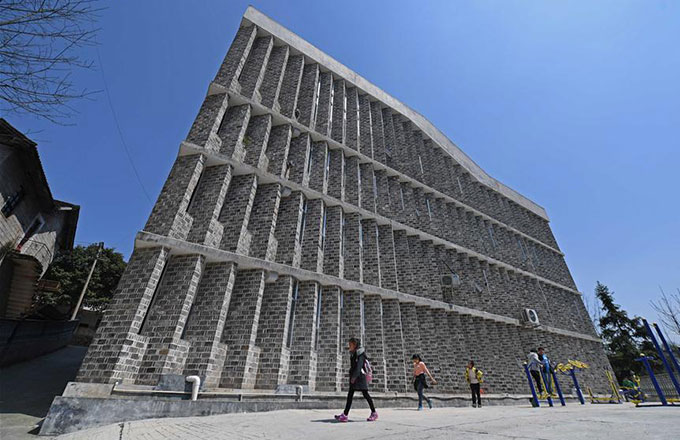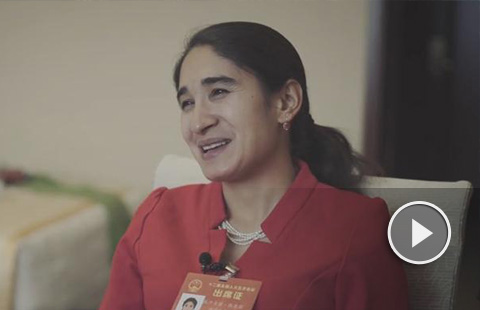Panda care resurgent 5 yrs after quake
CHENGDU - Forty-five giant pandas have been born in a center within the Wolong National Nature Reserve in Southwest China's Sichuan province in the five years since a massive earthquake wreaked havoc on the area, sources have revealed.
Though the 8.0-magnitude quake on May 12, 2008 terrified Wolong's giant pandas and destroyed and damaged their facilities, breeding of the animals has kept up at the China Giant Panda Protection and Research Center.
|
 |
|
Special: Wenchuan rising from rubble |
"We seek to breed from the best pairs to avoid endogamy," explained Zhang, one of a number of insiders who spoke to Xinhua about how Wolong's redevelopment has boosted their capabilities in nurturing the endangered animals.
The center is the world's largest giant panda breeding facility, currently housing 170 captive pandas previously living throughout the reserve, located only 10 km from the epicenter of the earthquake in Wenchuan County.
Following the quake, most of the pandas and staff in the center at that time were transferred to another breeding facility in Ya'an, some 140 km from the provincial capital, Chengdu.
That facility itself fell victim to similar circumstances when a 7.0-magnitude earthquake jolted Lushan County of Ya'an on April 20 this year.
Thankfully, it remained mostly intact, with all 61 of its pandas reported safe.
Meanwhile, a new center for panda breeding and research, sponsored by the government of Hong Kong Special Administrative Region (SAR), has been built on less rugged terrain in Huangcaoping in the Wolong reserve, with capacity to accommodate 80 captive pandas, said Li Desheng, deputy chief of the reserve.
The new center will feature 13 training zones designed to equip captive pandas for life in the wild. Their area ranges from half the size of a football court to one square km.
But while there are a limited number of pandas there at present, it will likely not be fully utilized until completion of a key road that will make remote Wolong more accessible, according to Li, who added that is is unknown when workers will finish the job.
The Hong Kong SAR government has also helped build the Giant Panda Rescue and Disease Control Center in nearby Dujiangyan City. This facility is of great importance as a rising number of captive pandas living in close quarters increases occurrence of transmissible diseases.
Pandas are susceptible to a wide range of maladies, including gastrointestinal and respiratory diseases.
In addition to disease control and treatment, the Dujiangyan base will hold a care center for aged pandas. The animals' average life expectancy is 25 years.
Throughout all these developments, protection of the endangered species has taken a step forward, with more captive pandas brought to the wild to test their ability to survive on their own.
"Wild training is the key to increasing the panda population and it has been the focus of our work in the post-quake period," Zhang Hemin said.
Zhang's center launched a wild training program in 2003 and Xiang Xiang, a male panda, was released into the wild in 2006. But Xiang Xiang died a year later after falling off a cliff.
The program restarted two years after the quake and brought in another five newborns to wean them from human care.
In 2010, Tao Tao, a male panda, became the center's second to venture into the wild after two years of training. Staff monitoring Tao Tao say it is doing well in its new environment.
Some pregnant pandas capable of feeding themselves are placed in a semi-wild environment to deliver cubs and care for them with little human intervention, explained Huang Yan, deputy engineer-in-chief of the China Giant Panda Protection and Research Center.
To monitor pandas' activity in the wild, GPS devices are affixed to rings tied around their necks, according to reserve deputy chief Li.
But the training program faces many challenges as experts are struggling to understand how captive pandas adapt to a new, wild environment and when they are ready to live on their own.
"Generally speaking, a panda must be able to find food and defend itself from predators to survive in the wild," Huang noted.
Yet collecting data on how pandas are getting on away from staff assistance may run contrary to the need to reduce human intervention in the wild, he added.
"We are still learning, and will bring more pandas into the program," Huang said. "The earlier they learn to live in the wild, the better."



















